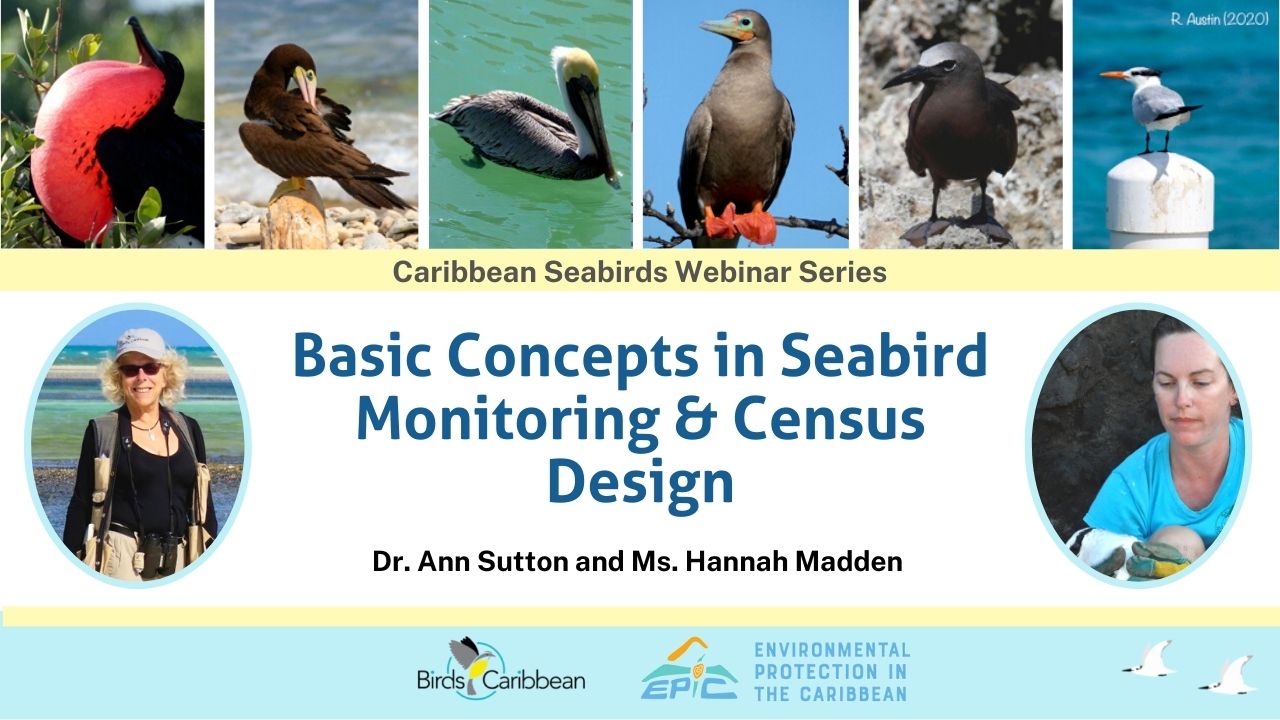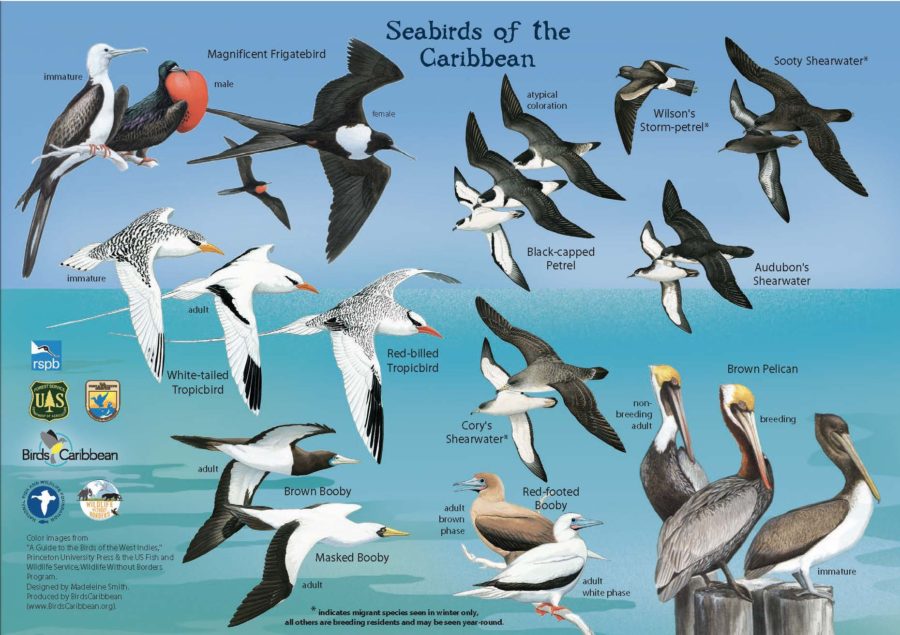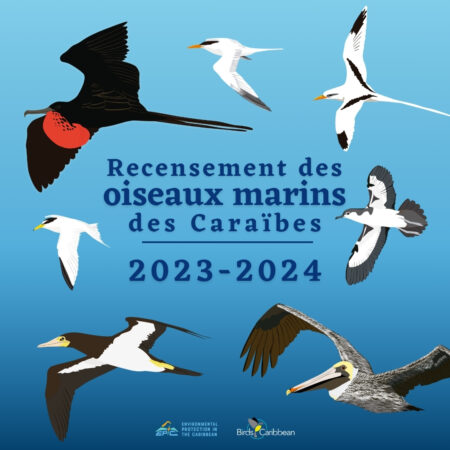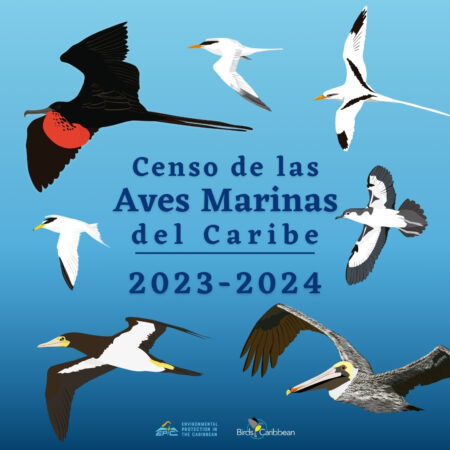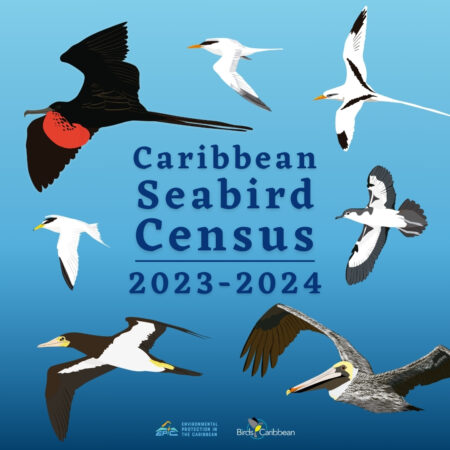 Whether it’s the regal tropicbird in a crevice, the boisterous Sooty Tern overhead, or the Brown Booby sitting defiantly on its nest, it’s exciting to be among seabirds of all kinds. This year we encourage you to join the excitement during the 2023-2024 Caribbean Seabird Census! (or CSC23/24).
Whether it’s the regal tropicbird in a crevice, the boisterous Sooty Tern overhead, or the Brown Booby sitting defiantly on its nest, it’s exciting to be among seabirds of all kinds. This year we encourage you to join the excitement during the 2023-2024 Caribbean Seabird Census! (or CSC23/24).
WHO can take part? This groundbreaking effort relies on participants to get out and count seabirds locally. Whether you manage a seabird nesting island as part of your professional duties, are an avid amateur ornithologist or birder, or are new to the seabird world but keen to get involved, you can take part in CSC23/24!
WHEN will CSC23/24 take place? It has already started but will run until the end of 2024! And a bit longer for species that nest over December-January. The best time to census nesting colonies of tropical seabirds is during the peak nesting period. The timing of this peak depends on species and can vary between islands – have a look at our Species Hours webinars (below) to learn more.
HOW to get involved in CSC23/24? Plan and carry out a count at one or more of your seabird colonies! Chances are that if you are a wildlife professional, you are already involved with the Caribbean Seabird Working Group! If not, we encourage you to join our email listserv and our Facebook page for regional information. At the island level, we encourage you to reach out to your local environmental NGOs: most of them already have plans to survey seabirds during CSC23/24 and would welcome any help. Once you have collected census data, you will be able to share it with the Seabird Working Group (more on this below).
Your data will contribute to a regional update of the health of our region’s seabirds, allowing us to determine if historical nesting sites are still active and whether populations are increasing or decreasing compared to previous estimates. We will also be collecting information on localized threats, which can inform conservation actions.
We have put together some great resources to help you get on your way to being a part of this important regional study. Use the links below to find what you need.
SEABIRD WEBINAR SERIES
QUIZZES
MONITORING MANUAL AND REFERENCE MATERIALS
DATA SHEETS
MERCHANDISE
LET’S START SURVEYING!
Seabird Webinar Series
To get you started, check out this series of six webinars on a variety of seabird topics:
- Caribbean Seabird Identification https://youtu.be/w2oSAgQz1oQ
- Basic Concepts in Seabird Monitoring and Census Design https://youtu.be/E38v0CIXbLc
- Field Methods for Seabird Surveys https://youtu.be/rNH8rmYIfoc
- Seabird Acoustic Monitoring https://youtu.be/HzkPbhIowpU
- Aerial Survey Methods for Monitoring Seabird Populations https://youtu.be/Xqnvn4BTWG4
- How to Handle Seabird Survey Data https://youtu.be/9H7IIJ-e6R8
Thanks to funding from SPAW-RAC, all of these webinars are available with French subtitles! Spanish translations are on the way. Thanks to Hannah Madden, Frantz Delcroix, and Juan Carlos Fernández-Ordóñez for help with the translations.
Recently we have begun a new series called Species Hours, which covers groups of seabirds; it’s an open forum for experts to share their wisdom and answer questions so you are prepared to go in the field and study seabirds.
-
- Large tree-nesters (Pelicans, Frigatebirds, Boobies) https://youtu.be/LMm03cNFE6Q
- Cavity nesters (Tropicbirds and Shearwaters) https://youtu.be/E9X2Yuk9sZY
- Ground nesters (Terns, Noddis, Gulls) https://youtu.be/ak2jHYeDxpQ
Quizzes
Test your knowledge of Caribbean seabirds and field methods with our quizzes, which are linked to our webinar topics! Watch the webinar series to find all the answers (follow the links below for each quiz).
Seabirds of the Caribbean – seabird identification
Field Methods for Seabird Surveys
Adventures in Dataland – data collection and management
Monitoring Manual and reference materials
Many seabird-related resources can be found here on our Seabird Resources page. This includes information on and links to books about Caribbean Seabirds, links to useful databases such as The West Indian Breeding Seabird Atlas, access to reports and some helpful Seabird ID resources.
This page is also where you can find the Caribbean Seabirds Monitoring Manual! The manual is a great place to start and is available in English, Spanish and French.
Our Census Data Sheet
We have prepared standardized data sheets which can be used either in the field or as a guide for the types of information the census should include. You may already have a form you use or a well-worn notebook; any format is fine as long as it includes the key elements found in the standardized data sheet.
It’s important everybody collects the same types of information found in the data sheet, such as GPS points, names of observers, species, and number of apparently occupied nests. Using standardized information will allow for easier and more relevant comparison of results across the region.
Once you’ve collected your field data, you’ll need to enter it into our standardized reporting database so we can easily compile and compare everybody’s data.
These CSC23/24 datasheets may be found in our shared Google Drive folder: https://drive.google.com/drive/folders/1PVU7hdPy0gjotO2lA86EMmDPioqjLRUi
Several files are provided:
- Field data sheets for simple counts (the most common type of survey), available in English, French, and Spanish
- Field data sheets for detailed counts (sub-sampling plots or transects), available in English
- Reporting database (to report your finalized and cleaned up data), available in English, French, and Spanish
Once you have finished your surveys, send your completed reporting databases to caribbeanseabirdsurveys@gmail.com.
Your data will then be referenced into the Global Biodiversity Information Facility, a free online, publicly available open-source repository of datasets that will ensure that you remain the full owner of your datasets. Once all CSC23/24 data have been collected, we will reach out to data owners and to Seabird Working Group members for interest in participating in data analyses. If you are keen to be involved in the regional analyses, you can already reach out to us at caribbeanseabirdsurveys@gmail.com. We will also strive to turn the regional analysis of CSC23/24 data into a learning opportunity for all. Once analyzed, the results of the surveys will be shared with the public. We are excited to share what the data tells us about the health of seabirds in the region!
Let’s start surveying!
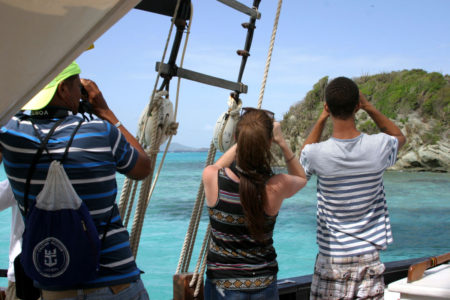
The year has already started so we encourage you to get out there and survey year-round breeding seabirds, such as pelicans, frigatebirds, tropicbirds, and boobies which can be found now. The next big surge in nesting will be when migratory seabirds like gulls and terns return.
Please do not hesitate to reach out to our team at caribbeanseabirdsurveys@gmail.com or through the Seabird Working Group listserve: SeabirdWG@BirdsCaribbean.groups.io (if you’re not already a member, sign up by sending a blank email to: SeabirdWG+subscribe@BirdsCaribbean.groups.io).
You can also join the Working Group’s Facebook page to hear about other people’s projects and share about your surveys. We are ready to help make your survey dreams a reality!
Graphics for the 2023-2024 Seabird Census are available in English, Spanish and French. Click on each image in the gallery below to enlarge then right click on an enlarged image and ‘save image as’ to download.
The 2023 Caribbean Seabird Census is jointly organized by BirdsCaribbean and EPIC, with support from SPAW-RAC and individual donations.

